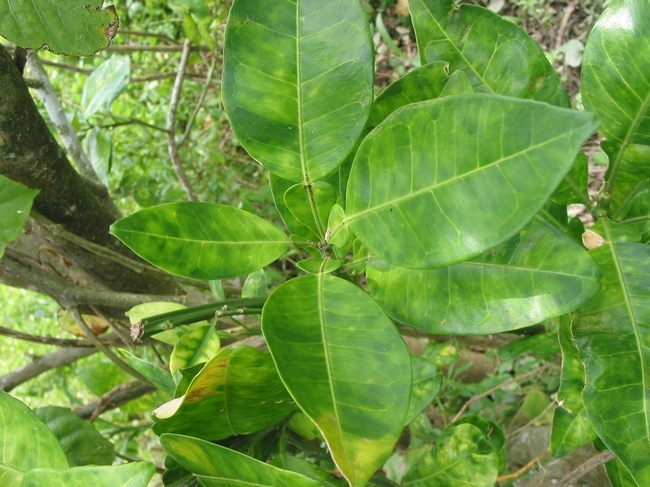Posts Tagged: HLB
Micronutrient deficiency can look like HLB infection
Familiarity with symptoms caused by micronutrient deficiencies is important for citrus growers and pest control advisers to ensure such maladies are not confused with symptoms of Huanglongbing, reported Cary Blake in Western Farm Press.
Neil O’Connell, UC Cooperative Extension advisor in Tulare County, a citrus expert, recommends that field staff also be well versed on these issues since they are in the field daily during the citrus harvest.
Huanglongbing, a disease spread by Asian citrus psyllid, is the worst citrus disease in the world. The disease was detected on one tree in Southern California in March, the first such find in the state. Officials are asking for farmers and home gardeners to be on the look-out for other HLB-infected trees.
O'Connell says deficiencies of zinc, iron and manganese can resemble leaf symptoms found in trees with HLB.
"Some deficiencies have fairly similar symptoms," O'Connell said. "If you are very familiar with deficiency patterns in these elements then it is much easier to separate this out. You can recognize whether the problem is zinc, iron, manganese, or another deficiency while possibly ruling out HLB."
A distinguishing characteristic of HLB infection is a yellow area that crosses from one interveinal area to another, O'Connell explained.
Another attentive dog averts disaster
A FedEx package filled with curry leaves and guavas arrived in Sacramento Wednesday infested with 100 Asian citrus psyllids, the Los Angeles Times reported today. In a scenario eerily similar to one that took place in Fresno two weeks ago, a trained dog alerted authorities to the package, the pests were trapped, analyzed at a lab and determined to be free of the bacteria that causes the citrus disease Huanglongbing (HLB).The package destined for Fresno was mailed from India; the package in Sacramento came from Houston, Texas.
"We know that this has been going on but it is just now that we are getting a feeling for how bad it is as we get more federally funded dog teams out there," the article quoted Beth Grafton-Cardwell, a UC Riverside citrus entomologist based at the UC Lindcove Research and Extension Center in Exeter.
UC scientists are working with CDFA, USDA and the citrus industry to prevent establishment of Asian citrus psyllid in California. But the effort has been met with several recent setbacks. Their greatest fear is for the incurable HLB disease that the psyllid transmits.
Psyllids not infected with HLB were found in Imperial and San Diego counties early last year; this week isolated populations turned up Los Angeles and Orange county backyard citrus trees.
Grafton-Cardwell believes the pests' eventual spread through the state's citrus regions is inevitable.
"It's only a matter of time before the huanglongbing disease finds its way to California from Mexico or elsewhere," Grafton-Cardwell told LA Times reporter Jerry Hirsch.

White, waxy tubules are a tell-tale sign of Asian citrus psyllid.

